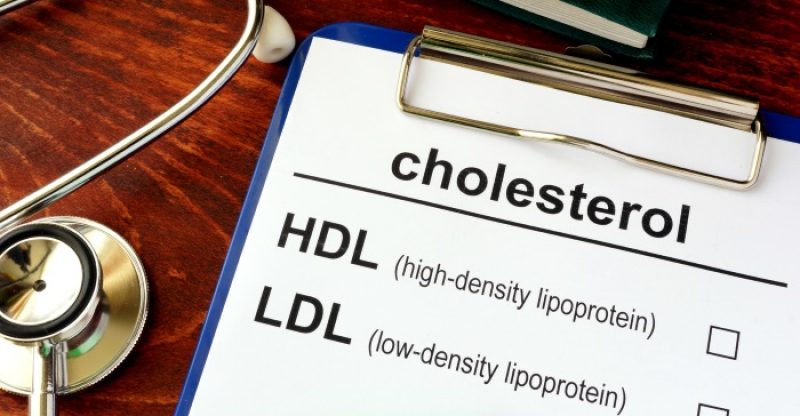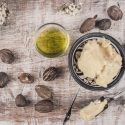Hyperlipidemia Causes, Symptoms and 12 Treatments
If you have high cholesterol and elevated triglyceride levels, you are among the 71 million people in the US with hyperlipidemia.
If you are not among those with this medical condition, chances are quite high that you know and care for someone who is.
While hyperlipidemia can be treated with conventional medicine, the best way to treat this disorder is through natural changes to your diet and exercise.
Our guide helps you understand what causes hyperlipidemia, what contributes to your risk for developing this condition, and how you can make natural changes to your lifestyle to treat this condition.
Treating hyperlipidemia does not have to be complicated or costly.
In fact, the easiest way to reverse this condition is to eat healthier and get more exercise.
Adding a few minor changes to your diet while also getting more exercise can significantly improve your cholesterol and triglyceride levels, effectively reversing your hyperlipidemia.
Keep reading to understand how you get hyperlipidemia, which will also help you understand the most effective methods for treating this condition.
Understanding Hyperlipidemia
Having high cholesterol and triglyceride levels can lead to many different medical problems, including diabetes, obesity, coronary artery disease, stroke, cardiovascular disease, and peripheral arterial disease.
Hyperlipidemia contributes to many different cardiovascular problems, and it is sometimes referred to as the “silent killer” because of its negative impact on your overall health and well-being.
Controlling your intake of fats, especially unhealthy fats, can help reduce hyperlipidemia, but understanding how this condition contributes to your health is important for us all.
How Hyperlipidemia Affects Your Heart
There are several different conditions that can affect your heart’s performance.
Many people confuse hyperlipidemia with hypertension, and understanding the differences between these is essential to your cardiovascular health.
Hypertension is most commonly referred to as high blood pressure.
Your blood pressure refers to how much energy is being applied to the walls of your arteries as blood pumps through your heart.
Hyperlipidemia, which is also known as high blood lipids, occurs when you have excess levels of fats in your blood in the form of triglycerides and cholesterol.
Hyperlipidemia can lead to narrowing of the arteries, and eventually cause complete blockage, as lipids adhere to the walls of your arteries and harden into plaque.
This is called atherosclerosis and can cause damage to your heart and lead to heart disease, a heart attack, or a stroke.
If you have high blood pressure, chances are that you also have elevated cholesterol or triglyceride levels.
If you have both of these conditions, you are at risk for other metabolic syndromes.
In fact, if you have high blood pressure, hyperlipidemia, and low levels of HDL cholesterol, or “good” cholesterol, you already have a metabolic disorder.
If left untreated, hypertension and hyperlipidemia can cause peripheral vascular disease, other cardiovascular disorders, stroke, heart attack, or even death.
You may be at risk for hyperlipidemia or hypertension if you have a family history of these conditions, and as you age, your risks increase, as well.
The good news about high blood pressure and hyperlipidemia is that both of these disorders can be reversed.
Making changes to your diet and lifestyle can lower your cholesterol, triglycerides, and blood pressure, and reverse some of the damage done to your heart by these conditions.
Types and Symptoms
Cholesterol is not necessarily bad for your heart.
You need cholesterol to produce hormones and to build cells, and your body actually makes its own cholesterol.
You also get cholesterol from the foods you eat.
Triglycerides are a different type of fat that your body uses to give energy to your muscles, as well as store energy for later use.
Increased triglyceride levels, combined with high LDL, or “bad” cholesterol, raise your risk of developing heart disease.
Medical professionals sometimes refer to hyperlipidemia as ICD-p hyperlipidemia.
This condition is classified as either primary or secondary, depending on the cause of your high cholesterol.
- Primary hyperlipidemia, which is also known as familial hyperlipidemia, is caused by abnormalities in your genetic code.
- Secondary hyperlipidemia, which is also known as acquired hyperlipidemia, is caused by some other condition, such as diet, physical activity, medication, a metabolic disorder, or some other source.
Familial hyperlipidemia is inherited from one or more of your parents’ DNA, and it causes high levels of triglycerides and cholesterol to be in the blood.
This disorder affects about two percent of the population (1).
If others in your family have heart disease or high cholesterol, you are at increased risk of developing these, as well.
Factors that make familial hyperlipidemia worse include being an alcoholic, having diabetes, being obese, and having hypothyroidism.
If you only have high cholesterol, you do not have hyperlipidemia.
This condition is diagnosed when you have not only elevated cholesterol levels, but also high levels of triglycerides in your blood.
While having high cholesterol is a problem for your heart and health, when you have this combined with high levels of triglycerides, you have hyperlipidemia.
There are rarely any detectable symptoms associated with hyperlipidemia.
You must have a blood test to know if you have this condition.
Symptoms of hyperlipidemia often go unnoticed until you have serious problems, such as a blocked artery, a heart attack, or a stroke.
Causes and Risk Factors
The most common causes of hyperlipidemia include a poor diet, lack of regular exercise, and smoking.
As you age, your risk for having hyperlipidemia increases, as well.
Other factors that can cause or raise your likelihood of developing hyperlipidemia include diabetes, hypothyroidism, alcoholism, and kidney disease.
A healthy person who is considered to be at low risk for hyperlipidemia will have triglyceride levels below 200 milligrams per deciliter, a total cholesterol level below 200 milligrams per deciliter, an HDL level over 40 milligrams per deciliter, and an LDL level below 130 milligrams per deciliter.
Levels that exceed these limits will place you in an unhealthy category that means you are on your way to developing hyperlipidemia.
Changing Your Diet to Control Hyperlipidemia
If you have hyperlipidemia, you are at risk for diseases of the blood vessel, stroke, and heart disease.
Those with hyperlipidemia are often prescribed statins by doctors to lower their blood lipid levels.
Statins are known to have some serious side effects, including an increased risk for diabetes, so finding an alternative, natural solutions to lower your levels and reverse your hyperlipidemia can be important (2).
Medical professionals, though, are often the first ones to recommend changes to lifestyle and diet as an effective approach to managing hyperlipidemia.
While these lifestyle changes can be difficult, which is why so many opt for medications over this approach, this natural strategy does not just treat your hyperlipidemia but can, in many cases, address the cause of your elevated lipid levels, thereby eliminating the problem.
What You Should Avoid Eating
In considering how to change your diet to treat your hyperlipidemia, let’s first discuss the foods you should eliminate or severely reduce in your diet.
Eating foods high in fat and that cause or worsen inflammation increases your risk of hyperlipidemia (3).
Reducing your consumption of these foods is a good first step.
To treat your hyperlipidemia, then, you should avoid eating these foods:
- Refined grains and sugars. These cause your liver to produce more cholesterol and also promote inflammation in your body.
- Hydrogenated fats, which can raise cholesterol levels.
- Processed foods. Most packaged and highly-processed foods are loaded with excess fats, salt, sugar, and other unhealthy ingredients that can contribute to your hyperlipidemia.
- Excess caffeine raises cholesterol levels, as well.
- Trans fats increase levels of LDL and promote inflammation.
- Pasteurized, non-organic dairy products. The processes to which conventional dairy products are subjected alter their chemical makeup and can make the fats in milk go rancid.
- Meat from factory-farmed animals. These products lack nutrients and are higher in cholesterol and other lipids than organically-raised varieties.
- Excessive amounts of alcohol promote cholesterol production in the liver. If you have high triglyceride levels, drinking too much alcohol can be dangerous.
What You Should Eat
Adding the following foods to your diet can help lower your risk for hyperlipidemia, and correct some of the high lipid levels leading to your condition.
Include the following in your heart-healthy diet.
- Omega-3 fatty acids. Omega-3s help to raise your levels of good cholesterol and lower your risk for cardiovascular disease. Cold-water fish are excellent sources of omega-3 fatty acids, so eat plenty of salmon, tuna, sardines, mackerel, and herring.
- Soluble fiber, which is found in vegetables, fruits, seeds, and nuts, binds to cholesterol and removes it from your body. Eating high-fiber foods is an excellent way to lower cholesterol and triglyceride levels.
- Onions and garlic, which are high in sulfur, can help to cleanse arteries and lower LDL cholesterol levels.
- High-quality, extra virgin olive oil lowers inflammation. It also contains antioxidants and has many benefits for your heart. Olive oil naturally raises HDL levels.
- Apple cider vinegar can also help lower cholesterol. Drinking just one tablespoon of apple cider vinegar daily increases your liver’s ability to produce bile and process cholesterol, which means you will have less of it in your blood.
Natural Treatments for Hyperlipidemia
Drink Plenty of Water
Your body needs water to perform nearly all vital functions.
Not only does drinking water keep you hydrated, but drinking plenty of water promotes regular urination, which removes cholesterol, fats, and other toxins from your body (4).
Drinking at least 72 ounces a day for women and 104 ounces a day for men will help your body process soluble fiber, as well, which also removes fats from your body.
Get Regular Exercise
Exercise is one strategy that has the power to lower your lipid levels significantly.
In addition to cardiovascular exercise to keep your heart strong, also engage in strength training and burst training, both of which can help regulate hormone levels, improve HDL cholesterol levels, and lower LDL cholesterol levels (5).
Shed Excess Pounds
Losing just ten percent of your body weight can significantly lower your lipid levels and reduce your risk for hyperlipidemia.
If you are obese, talk with your doctor about the best methods for your weight loss plan.
Stop Smoking
When you smoke, you not only raise your risk for cardiovascular disease, but you also increase your levels of triglycerides and bad cholesterol (6).
Quit smoking today, and talk with your doctor about effective smoking cessation programs.
Eat Plenty of Dietary Fiber
Increasing your intake of dietary fiber is necessary for controlling your lipid levels and reversing your hyperlipidemia.
Fiber aids digestion promotes the efficient absorption of nutrients and regulates hormone levels, including insulin (7).
Foods rich in dietary fiber also contain plenty of heart-healthy nutrients to promote better health.
Try Red Yeast Rice
When rice is fermented with a yeast known as Monascus purpureus, the substance that is extracted after this process is known as red yeast rice.
Red yeast rice has been used for centuries across Asia, especially China, and it has been tested in the treatment of hyperlipidemia.
Red yeast rice can reduce cholesterol by as much as one-third, making it an excellent, natural treatment.
Scientists examined the effects of red yeast rice on obesity, which is a contributing factor to hyperlipidemia.
In animal trials, the subjects who ate red yeast rice showed improved levels for not only lipids but also liver enzymes and leptin levels.
Red yeast rice is, therefore, a promising treatment for not only hyperlipidemia but also obesity (8).
The recommended dosage is 1,200 milligrams of red yeast rice, taken with 100 milligrams of CoQ10, twice per day.
You can purchase red yeast rice from most online supplement retailers or health food stores.
Eat More Garlic
Garlic is an excellent natural treatment for hyperlipidemia because it lowers your total cholesterol, as well as increases your HDL cholesterol levels.
Animal trials have shown significant reductions in cholesterol and triglycerides using a garlic-supplemented, heart-healthy diet (9).
Eating garlic resulted in lowered LDL levels and increased HDL levels, which can greatly reduce your risk for cardiovascular disease.
Garlic has long been known not only to reduce cholesterol, but also to lower blood pressure, promote regular and healthy heart rhythm, and inhibit the formation of blood clots.
All of these make garlic an excellent option for keeping your heart healthy and working properly.
While you will likely have a hard time eating enough garlic to enjoy all the heart benefits, you can take garlic supplements.
The recommended dosage for the treatment of hyperlipidemia is 500 milligrams per day.
Garlic supplements are generally measured by the potency of the allicin content, which is the chemical compound that is most beneficial for lowering blood lipids.
Garlic supplements vary widely in their strength and potency, which is why research on humans has produced inconsistent results.
More research is needed to include better dietary controls, more standardized measurements regarding garlic potency, and long-term follow up for those on garlic supplementation therapies.
Eat More Omega-3 Fatty Acids
An inclusion of omega-3 fatty acids in your diet should not be overlooked for its heart benefits.
In particular, the omega-3 fats known as EPA and DHA can help lower cholesterol levels, which can control hyperlipidemia.
Fish oil has numerous heart benefits, and it also helps your liver function better, which in turn means you are processing cholesterol more effectively.
Taking up to 2,000 milligrams per day of fish oil, which contains both of the needed heart-healthy omega-3 fats, can reduce your risk for cardiovascular disease, hyperlipidemia, and nonalcoholic fatty liver disease (10).
Drink Green Tea
Green tea contains both antioxidants and catechins, which can help combat many of the conditions that lead to chronic disease.
Green tea has been used for centuries to boost immunity and metabolism and can lower LDL levels, which is good news for those with hyperlipidemia (11).
Take Supplements
There are additional nutritional supplements that can help you treat your hyperlipidemia.
Niacin, chromium, and milk thistle are three that have proven results in lowering lipids and decreasing cardiovascular symptoms.
Niacin, which is also known as Vitamin B3, can reduce LDL levels by as much as one-quarter, while also increasing HDL levels by as much as a third.
Eating foods rich in niacin is a good start, and you can also take 1,500 milligrams each day of a quality niacin supplement.
Niacin improves the symptoms of diabetes, as well, which means it is good news for both those with hyperlipidemia and those with diabetes (12).
Your body needs chromium to perform many types of metabolic functions, including metabolizing fats.
There is a link between healthy arteries, normal blood serum cholesterol levels, and higher chromium intake, so getting plenty of this essential mineral is vital.
Taking up to 1,000 micrograms per day, depending on your overall health and age, along with a niacin supplement, can protect your heart and improve your hyperlipidemia (13).
Milk thistle is an herb that decreases inflammation, cleans the blood, and reduces oxidative stress damage to your arteries.
Milk thistle is also excellent for lowering cholesterol levels.
Thus, taking up to 150 milligrams per day of milk thistle an excellent treatment for hyperlipidemia, as well as for protecting your heart health.
Try Essential Oils
Essential oils are another way to treat your hyperlipidemia.
Lemongrass essential oil extract, when consumed, can reduce high cholesterol levels dramatically.
Lemongrass oil has been shown to reduce LDL cholesterol levels, as well as lower levels of triglycerides.
This means your blood can flow with less obstruction, improving your heart health.
Lavender, cypress, and rosemary are other essential oils that can lower cholesterol, provide antioxidants, and support your cardiovascular health.
Conclusion
Hyperlipidemia is a condition characterized by elevated levels both of serum cholesterol and triglycerides.
Combined, these place your heart at an increased risk for stroke, heart attack, and cardiovascular disease.
Over 70 million people in the US have hyperlipidemia, but only about half of those receive any kind of treatment for their unhealthy lipid levels.
Those with diabetes, obesity, and metabolic syndrome are likely also to have hyperlipidemia.
Hyperlipidemia is a cause of such disorders as the peripheral arterial disease, coronary artery disease, and stroke.
Those with high blood pressure, also known as hypertension, are also likely to have hyperlipidemia.
By adjusting your lifestyle appropriately, you can make significant improvements to your hyperlipidemia, including treating it completely.
Diet and activity level are the top predictors of hyperlipidemia, and changing your diet to eliminate sources of unhealthy fats, as well as getting more exercise, can reverse this condition completely.
Other risk factors for developing hyperlipidemia include smoking and age.
As you get older, your risk for developing this condition rises.
Statins are the top pharmacological treatment for hyperlipidemia, but these drugs can have adverse effects.
Changing your diet to treat hyperlipidemia is not only inexpensive and natural, but it comes with no side effects.
Adding heart-healthy fiber, plenty of water, and omega-3 fatty acids to your diet can help reduce cholesterol and triglyceride levels.
In addition, you can use other natural treatments such as garlic, nutritional supplements, green tea, essential oils, and red yeast rice to treat your hyperlipidemia.
FDA Compliance
The information on this website has not been evaluated by the Food & Drug Administration or any other medical body. We do not aim to diagnose, treat, cure or prevent any illness or disease. Information is shared for educational purposes only. You must consult your doctor before acting on any content on this website, especially if you are pregnant, nursing, taking medication, or have a medical condition.
HOW WOULD YOU RATE THIS ARTICLE?






